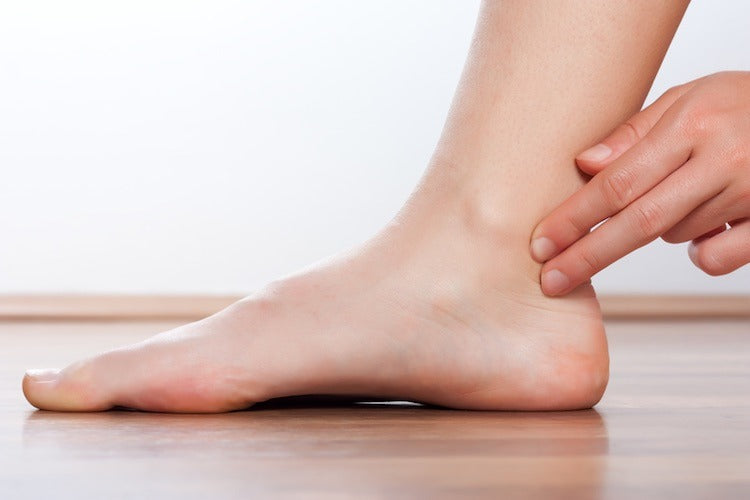
The body is a wondrous machine; it can achieve impressive feats of strength like pulling a train, perform graceful dexterous feats like a cat, and withstand powerful blows after falling from impressive heights. Anyone who spends time on the internet will eventually witness a person pushing their bodies to their limits, whether for views or self-improvement.
Yet all this display of physical prowess comes with a price, and most of the time, muscles or tendons pay the price. The good news is if you are bothered by tendon pain, Kinesiology sports tape can help.
Tendon pain usually occurs in people who live an athletic lifestyle, and tendon pain is usually felt in the legs at the knee or feet. That does not mean that other ligaments and tendons in the body can’t be affected. It depends on the sport the individual practices.
These are sport-specific injuries; a javelin thrower would most likely affect the tendon in his shoulder than his back. Much like powerlifters might hurt their lower backs. The great news is that Kinesio tape can offer sports enthusiasts much-needed support.
Firstly, a person needs to know they are actually hurting from tendon pain or tendonitis. The spot-specific pain is usually caused by sudden or sharp movements, including repetitive exercises, that include throwing, jumping, and running. Tendonitis can also be brought about by repetitive movement, poor body mechanics, posture, and even technique while playing a sport.
What Are the Symptoms of Tendonitis
The most common sensation when dealing with discomfort or pain in the joint is caused by difficulty when trying to move the joint. Occasionally, a grating and cracking sensation occurs when the person moves the joint, which causes the tendon to move. In some cases, their pain is accompanied by swelling, redness, and a hot sensation on the skin.
The 5 Symptoms of Tendonitis Quick Guide:
- Swelling
- Warmth
- Tenderness
- Redness
- Grating Sensation in the joint
What Causes Pain?
The main culprit of the pain experienced in the body is the inflammation and irritation of the tendon. The dense and thick cords attach to the muscle and to the bone. This condition makes the movement of the articulation feel grating and, in some cases, painful. A loud clicking noise could also indicate swelling. The swollen cords cause discomfort, and a primary response could be to stretch. Still, stretching could often result in more significant compression of the tendon to its adjoining points with the muscle or bone, which could actually worsen the pain.
Ankle, Knee, Shoulder, Elbow, Lower Back
Tendonitis can affect several parts of the body, and its name and potential treatment can change in each part. Though most traditional forms of sports and regular therapy recommend immobilization, alternative approaches allow athletes to still participate in their sports, so they are not required to miss any opportunities to train or even compete.
Foot: Foot or ankle tendonitis (aka Tendinitis) is when a tendon in the foot is compromised by twisting or tripping, usually a jerking motion caused by a misstep or even bad form during an exercise. This type of injury is suffered by runners or even boxers that jump rope for extended periods of time.
Knee: Patellar Tendinitis is an injury to the connecting tendon involving the kneecap (patella) to the shinbone. The function of the patellar tendon is to work in conjunction with the muscles in the front of the thigh. It works to extend the knee so the person can kick, run, jump, walk, and dance; if it involves footwork, it involves the patella.
Shoulder: Tendonitis of the shoulder (rotator cuff tendinitis) is the inflammation that affects tendons and muscles that help the shoulder joint move. This usually results from the tendon blend pitched by the surrounding muscle. This type of affliction usually occurs from sports injuries where the arm moves over the head repeatedly (swimming, throwing, climbing).
Elbow: Elbow Tendonitis (lateral epicondylitis), aka tennis elbow, is a painful condition that can occur in the tendons in the elbow as they are strained and overused. The constant and repetitive motion of the wrists and arms (this includes constant lifting of babies for mothers and fathers). Despite the fact that the sports-related name tennis elbow can affect anyone who overuses the joint in everyday life and at work.
Lower Back: Spinal tendonitis is not only uncomfortable but the position of the inflammation can be prolonged to heal. The tendon can become swollen and affect the nearby nerves shooting pain across the back and part of the leg. The restricted blood flow can cause numbness and a sensation of weakness in the legs and arms.
RICE (REST, ICE, COMPRESSION, ELEVATION)
Traditional sports medicine has always had an answer for inflammation. The tool chest has always been at the ready and, fortunately, has only gotten better as time has passed. The R.I.C.E method has been an integral part of sports medicine. The compression aspect of the method has been the most improved with the addition of Kinesiology tape, which allows the patient to still train in their sport.
Rest: Simply put, once the injury has occurred, the body needs time to mend. The patient should take it easy and allow the inflammation to subside.
Ice or Heat: Depending on what could benefit the mending of the injury, a cold compress, icepack, ice bath, warm towel, or warm bath can be applied. The idea is to allow the temperature to bring down the swelling. Once the swelling is lessened, blood can flow freely, adding to the healing process.
Compression: The wrapping or dressing of the injury to immobilize the joint. The pressure exerted by wrapping against the swelling fights the fluid build-up; as a result, blood flows freely and allows the body to heal correctly.
Elevation: Raising the affected area to help fight off swelling and inflammation.
What is Kinesio Tape and Compression Therapy
Dr. Kenzo Kase, chiropractor, developed the therapeutic tape during the 1970s to create an alternative to the unmoving medical tape that was available at the time. Dr. Kase intended to treat an athlete that was insistent on training despite suffering a lesion. The athlete was under pressure, considering he would soon compete in an important event and would be sidelined due to the injury.
The tape Dr. Kase created was a combination of elastic polymer and cotton. The adhesive in the tape would also include an anti-inflammatory medication to help the athlete deal with the pain caused by the injury. The tape would be sturdy enough to compress the injury to allow the blood flow while flexible enough to allow articulations to move as freely as possible.
The athletic tape or Kinesiology tape works by applying pressure to the articulation where the tendon joins the muscles. A small gap is created, and blood flow finds its way to the inflamed zone, bringing in more oxygen and helping heal the tendon. The Kinesiology tape is strong enough to support the articulation and helps the tendon keep stable and avoid further injury despite the effort by the person working out.
How to Apply and Remove?
Unlike previously used medical tape that wraps around an injury to immobilize an articulation, Kinesiology tape is more efficient. It targets specific joints to provide support without wrapping tape around like a mummy. Several videos and articles online provide detailed descriptions of how to apply the tape so it can be best used. Yet here is a quick list of how to apply the tape.
Quick Application
- Identify the afflicted area.
- Research the proper application of the tape and how to apply
- Cut tape to the proper length
- Shave or cut the hair around the articulation
- Clean the area with soap and water
- Apply the tape as instructed
- Rub the tape to activate the adhesive
The tape adhesive is well known for being very strong. The glue lasts up to five days, and the composition of the fabric is designed to be water-resistant. This is because it is designed to be used during sports activities and not lose grip on the skin despite sweating. Once the workout is done, a person should wash the tape in warm water, apply plenty of soap then peel the tape. If there is no soap available, it is okay to use baby oil. Allow the oil to soak the tape, and then peel the tape off.
The athletic tape’s color and sensation also remind the brain constantly that it is there to protect against an injury. It makes the athlete aware that no matter how well they are feeling at the moment, they should bear in mind they are training while injured and that it is in their best interest to train moderately to allow their inflamed tendon to heal.



